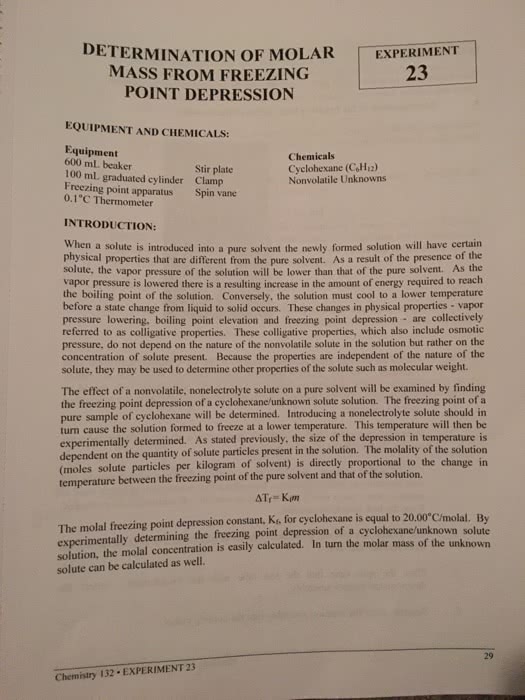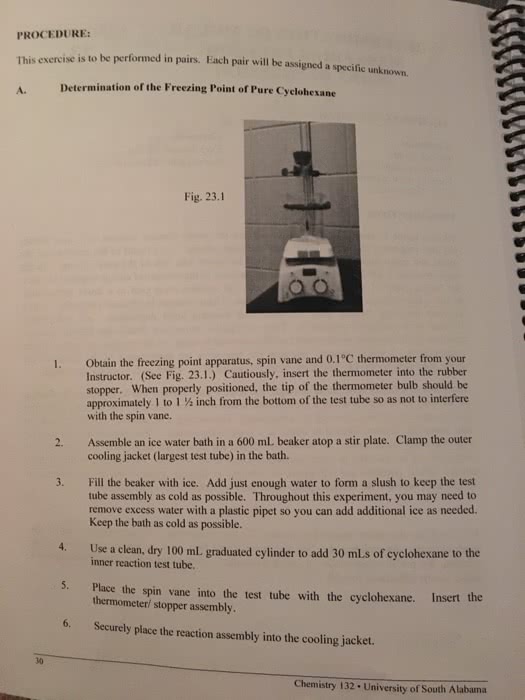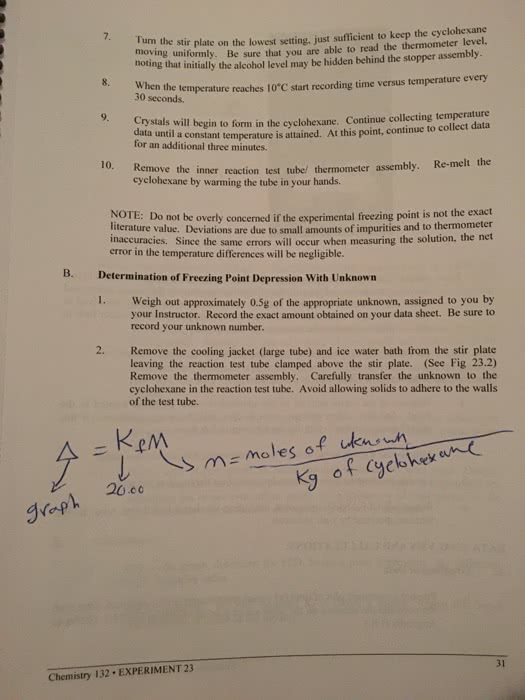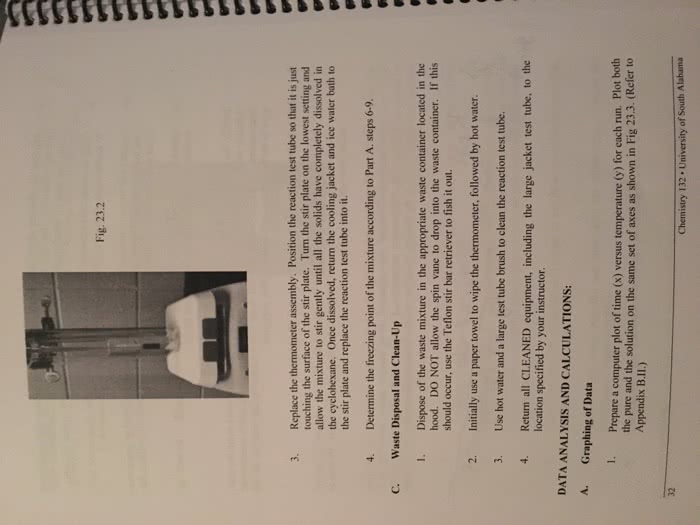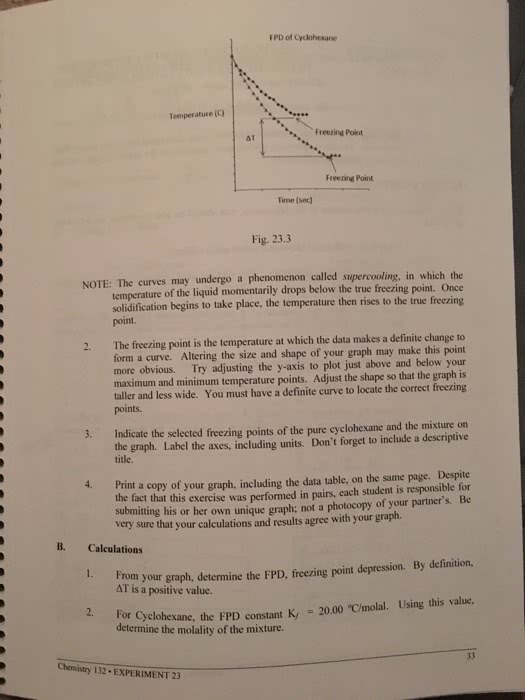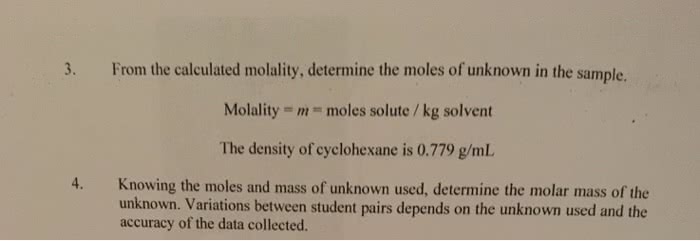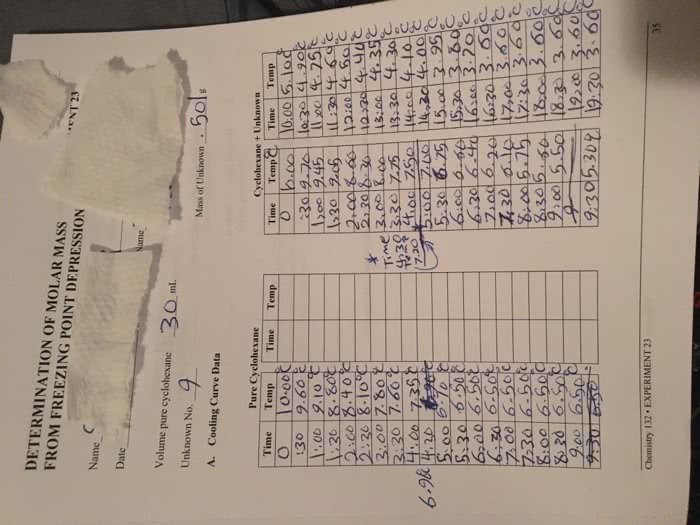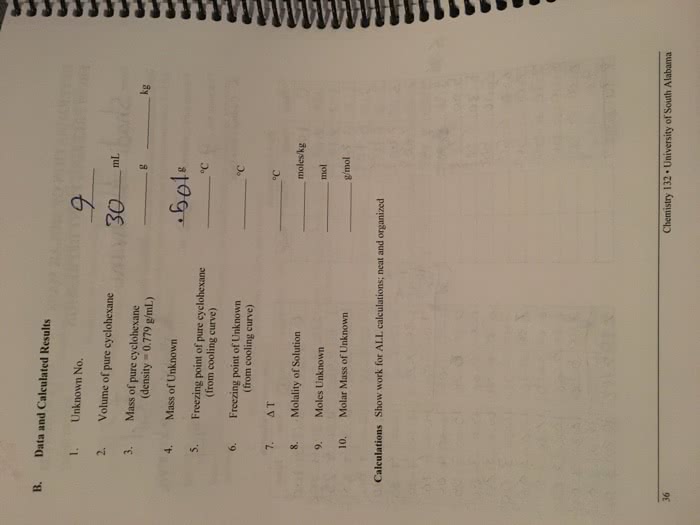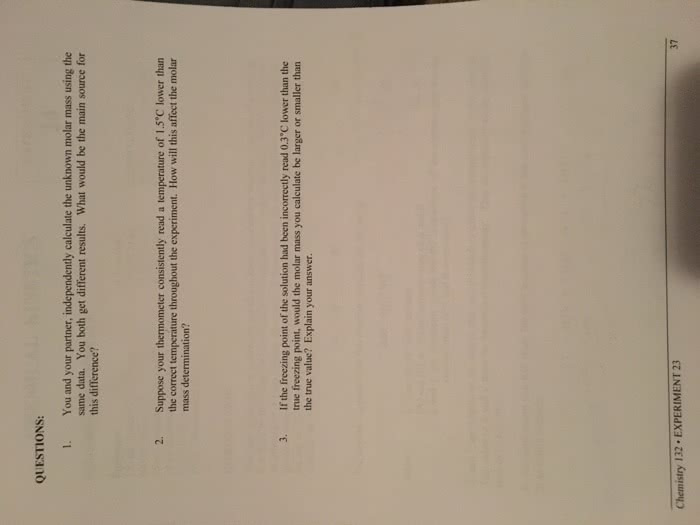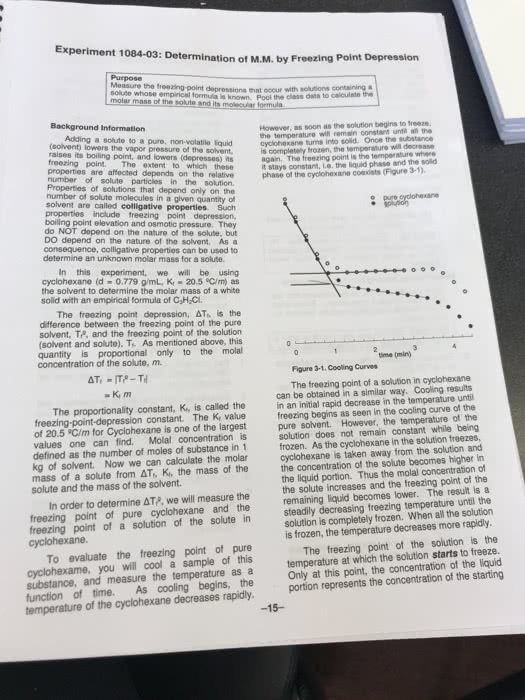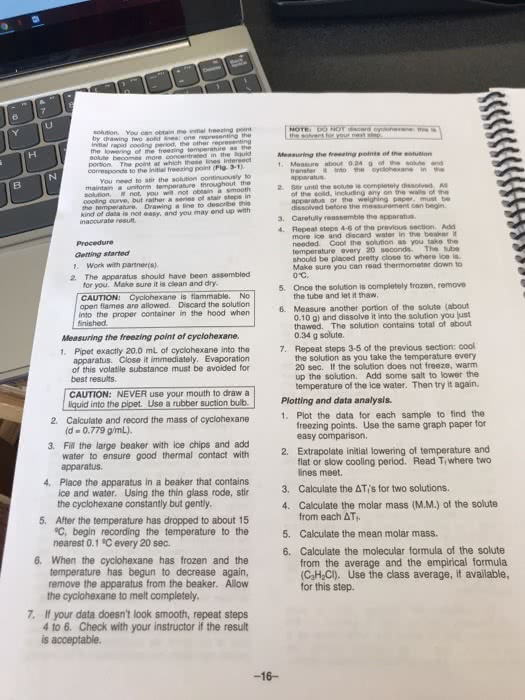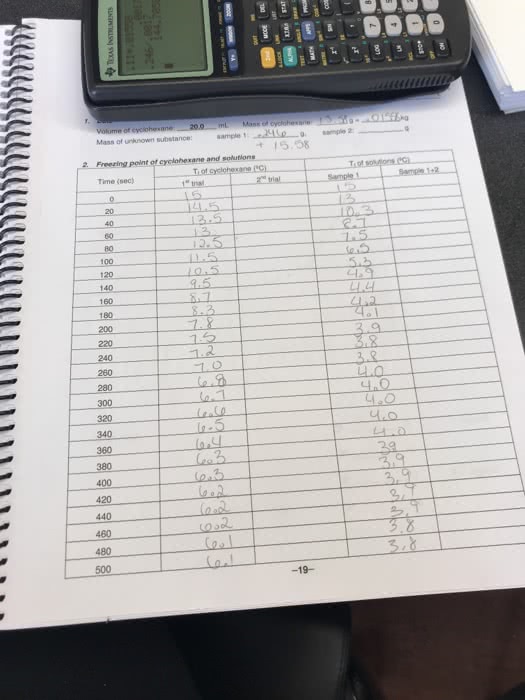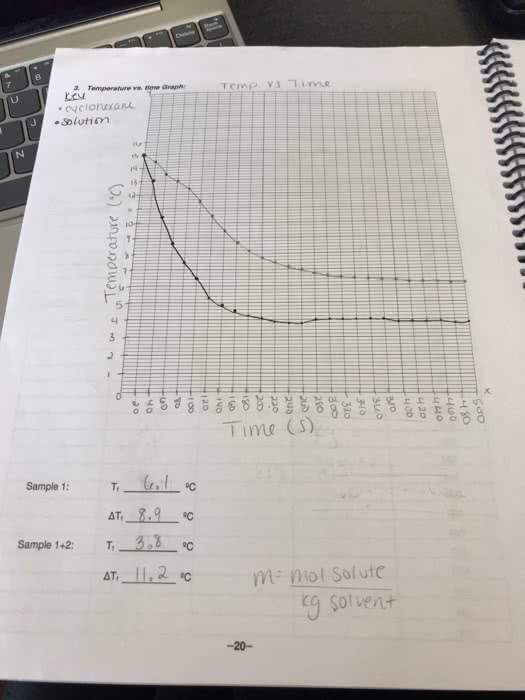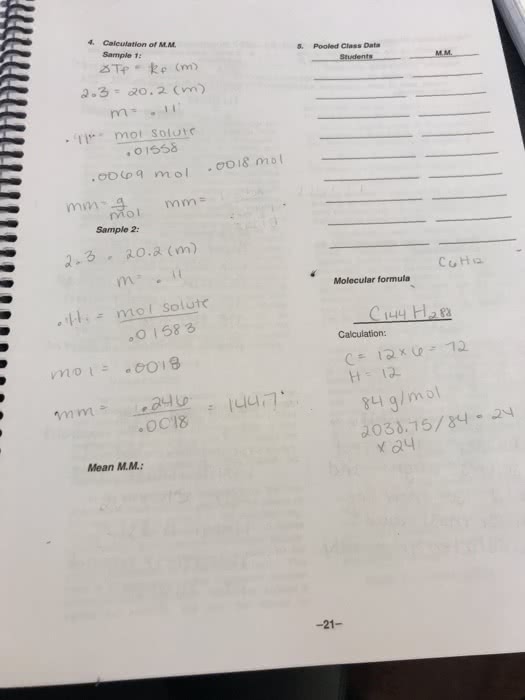Chemistry 2214A/B Lecture Notes - Lecture 25: Chloroform, Gibbs Free Energy, Benzene
41 views2 pages
29 Jan 2015
School
Department
Course
Professor
Document Summary
Colligative properties part 2: freezing point depression. When a solute (non-volatile) is dissolved in a solvent the freezing point of the solvent decreases. Note: when we consider two nonvolatile substances a and b at a given pressure, if the temperature is high enough, both substances will melt (become a liquid). Thus solvent and solute would have a broader meaning. Consider an ideal binary (a and b) system consisting of solid and liquid phases. If b (solid) is in equilibrium with a liquid containing both b and a (solution), the chemical potential of solid b and the chemical potential of b in the liquid must be the same. In equilibrium, chemical potential of b must be the same in all phases. Since the change in chemical potential between solid and liquid phase of b is the molar gibbs free energy of fusion, this allows for the use of the gibbs-helmholtz equation:
Get access
Grade+
$40 USD/m
Billed monthly

Homework Help
Study Guides
Textbook Solutions
Class Notes
Textbook Notes
Booster Class
10 Verified Answers
Class+
$30 USD/m
Billed monthly

Homework Help
Study Guides
Textbook Solutions
Class Notes
Textbook Notes
Booster Class
7 Verified Answers

